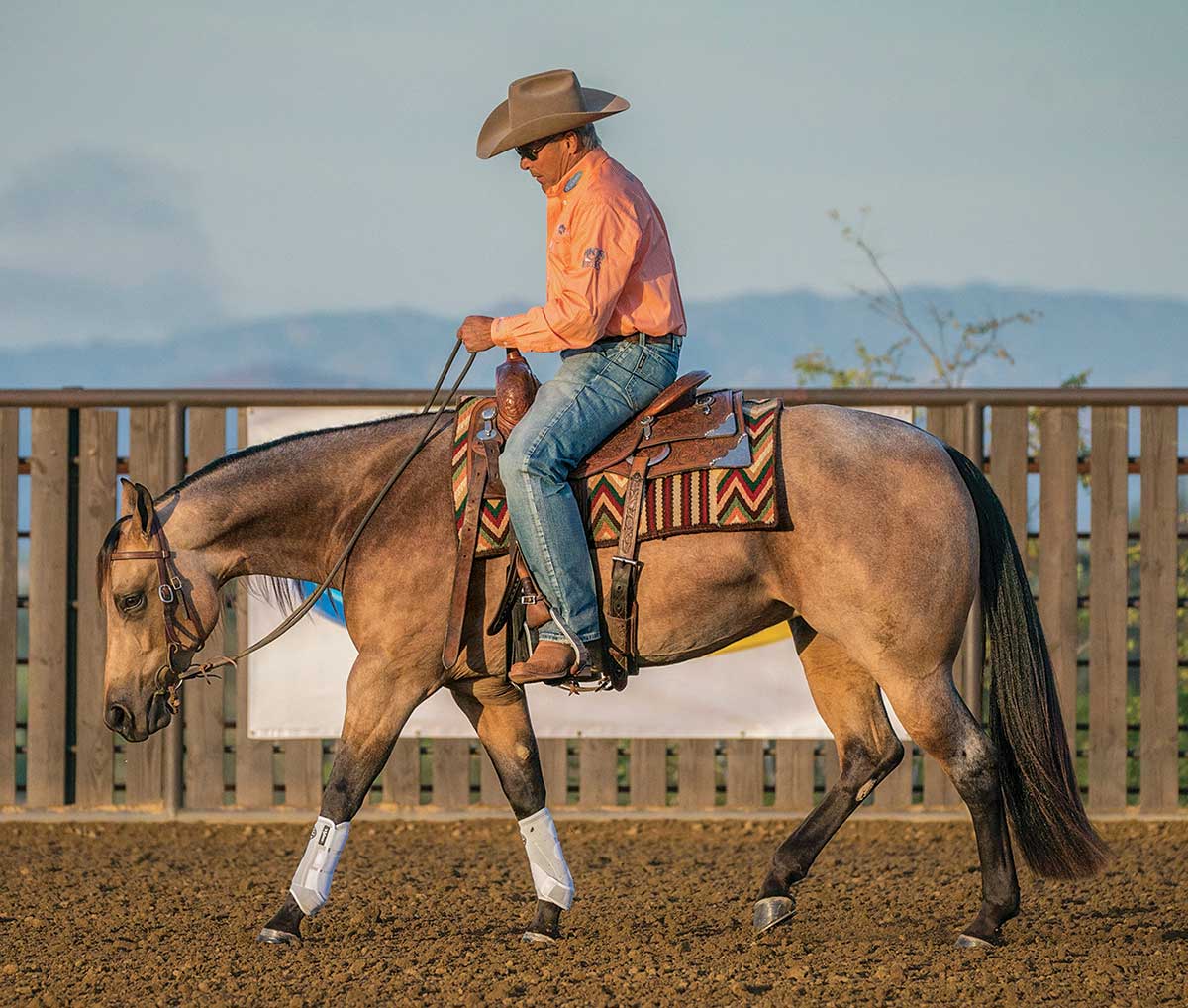
If you went to the Kentucky Derby, would you bet big on the long shot? Or would you take the sure thing? Your choice in young horses can mean the difference between winning—or losing—big or minimizing your risk along with your possible profit.
The same holds true when buying and selling prospects—that is, horses younger than 2 years old. A yearling represents the big gamble with more unknown variables and chances for “what if this goes wrong?” The older the prospect is, the fewer unknowns there are, making that horse a less risky investment.
No matter the horse’s age, I consider his look/presence, breeding, attitude/disposition, and movement. I’ll break down what these traits indicate and which are more likely to be sure things or complete unknowns in yearlings and 2-year-olds. This will arm you with knowledge to buy your next young horse.
Trait #1: Look/Presence
What it means: Every horse’s look and presence is different, which means each horse must be considered as an individual. To me, this attribute takes the whole package into consideration instead of focusing on one trait, such as his pretty color or markings. When you look at a horse you’re considering buying, you probably have an instant reaction. Note your gut feeling, and keep it in mind when you make your final decision.
Yearling sure bet?: Not yet. A horse’s overall look can change drastically even in just one year. You can get a feel for “that one will be a real looker,” but you can’t be 100-percent sure at this point.
2-year-old you’d better get?: Possibly. By the time he’s 2, a colt (or filly) is showing his true colors in terms of his presence. He could still change—something as simple as a run-in with a fence can drastically alter his physical appearance. But his presence and look are more set by this time.
Trait #2: Bloodlines
What it means: This one’s self-explanatory. But you still have to do your research and know the traits of the bloodlines you consider and how they’ll work within your riding and training program, as well as with your personality. Also consider if the sire and dam are just a fad, flash-in-the-pan or if they’re proven producers of what you’re seeking.
Yearling sure bet?: Most likely. This is about the only sure bet you get on a yearling. The black type on his papers can’t lie.
2-year-old you’d better get?: Probably. Just as with the yearling, this is a box you can either check as being what you want or not check and walk away. At this point, you’ll likely pay a higher price for the designer genes, plus the effort that’s gone into starting the horse, feeding him, and maintenance up to this point in his life.

Trait #3: Attitude/Disposition
What it means: Is the horse willing to be caught? Does he respond to pressure on his nose? If he’s started under saddle, how does he respond to cues? Does he move away from your leg? These types of questions will give you an indication of his attitude and disposition. It’s also something that can come from his sire and dam, so do your research.
Yearling sure bet?: Nope, still not 100-percent. But you can get an idea of how his attitude will develop. He could change drastically once he’s started under saddle and handled more. A youngster’s willingness and pleasant disposition can be “trained out” if he’s not handled correctly at the beginning.
2-year-old you’d better get?: More likely. By this time, the horse’s attitude and general demeanor are better formed. You can look for his reaction to different stimuli and know if he’s very sensitive, inquisitive, interested, willing, etc.
Trait #4: Movement
What it means: This is form to function. You’ve considered the horse’s conformation when taking in his overall look. Now it’s time to see it in action. Consider how he carries his head and neck. (See “Why So Low” in the January issue for my thoughts on head carriage.) Is he coordinated or clumsy?
Yearling sure bet?: This category is still a question mark for most very young horses. They’re bouncy and playful, so it’s hard to get an idea of what they’ll look like when they work. Watch your prospect in a round pen. Does he go along quietly in a way that could develop into what you’re looking for?
2-year-old you’d better get?: A 2-year-old is probably started under saddle, so you can get a better idea of how he might fit into your program and how he moves. A high-headed horse with a choppy stride isn’t going to change much as he progresses in training. A soft-faced, graceful mover has more promise of becoming what you want—or what you want to sell.
Add It All Up
Once you’ve considered these four traits, ask yourself, “If I buy this prospect, would I be willing to keep him if I can’t sell him for some reason?” (E.g., the market turns or demand for a bloodline diminishes.) I find that if he’s one I wouldn’t mind keeping, most other people will want to buy him.
Next, identify your risk tolerance. Are you willing to gamble big on recouping your expenses—and making a profit—if you choose a yearling? Or are you more conservative and want to buy a surer thing, which you’ll pay more for as a 2-year-old or older?
All horse purchases are gambles—there aren’t any sure things. But you can improve your odds by considering the horse’s main traits and assessing your end goals.
Bob Avila, Temecula, California, is an AQHA world champion, three-time NRCHA Snaffle Bit Futurity winner, NRHA Futurity champ, and two-time World’s Greatest Horseman. He’s been named the AQHA Professional Horseman of the Year. Learn more at bobavila.net.






